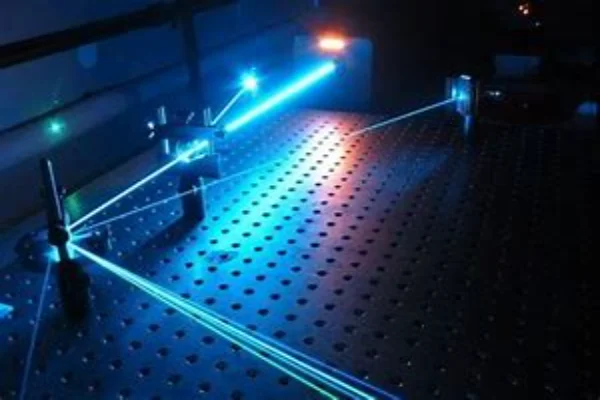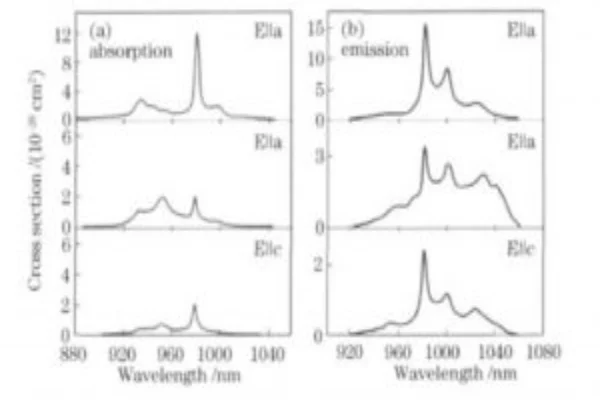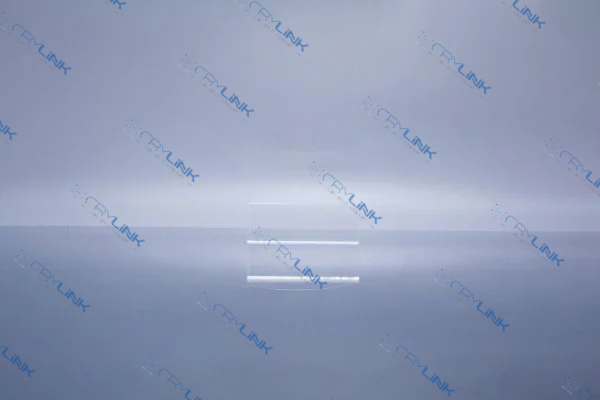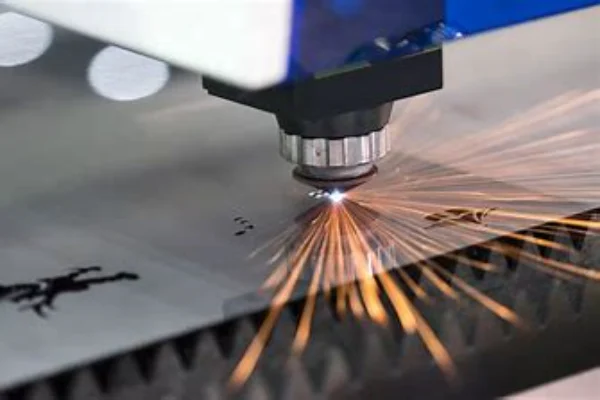Introduction
The world of lasers has witnessed a paradigm shift with the advent of multiband solid-state lasers. These versatile systems emit light at multiple wavelengths, paving the way for diverse applications. This article delves deep into the world of multiband lasers, exploring their potential in various sectors, from medical therapy to nonlinear optics and material processing.

Understanding Multiband Solid-State Laser
Multiband solid-state lasers can emit light at multiple wavelengths, making them ideal for various applications. Unlike traditional lasers that emit at a single wavelength, these lasers have an expanded spectral range. This ability offers researchers and industries an unmatched tool for diverse applications.
Key Components of Multiband Lasers
Multiband laser have made a significant mark in the field of optics and photonics due to their unique characteristics and components. At the heart of their operation are specific crystals that dictate their performance and flexibility in multiple applications.
The Yb:KGW crystals, or the Ytterbium-doped Potassium-Gadolinium Tungstate, are a central component. Their significance can’t be overstated, given the broad emission spectrum they present. This broad spectrum means that the laser can function at multiple wavelengths, providing the versatility that many industries now rely on. Additionally, the high thermal conductivity of these crystals ensures that the lasers operate efficiently, even under high power or prolonged use.
This efficiency is crucial in applications where consistent laser output is vital. Another noteworthy feature is the minimal thermal lensing. In the world of optics, lensing can distort the output, but with minimal lensing, users get a cleaner, more precise result.
On the other hand, Alexandrite crystals have been a game-changer for solid-state lasers. Their wide emission bandwidth means they can produce light across a vast range of wavelengths. This characteristic of Alexandrite crystals enables the lasers to be tuned precisely to the desired frequency, making them perfect for specialized tasks. Their efficiency in tunability also ensures that energy is not wasted, making them both cost-effective and environmentally friendly.

Beyond their components, the applications of multiband solid-state lasers are expansive and transformative. Their multi-wavelength capability means they can be tailored for specific tasks, from medical treatments targeting specific tissue depths to material processing requiring precision cutting. In medical therapy, for instance, the flexibility of multiband lasers ensures that treatments are not only effective but also safe, minimizing potential harm to surrounding tissues. Similarly, in the realm of material processing, the precision they offer translates to better quality outputs and reduced wastage.
In conclusion, the components of multiband lasers, namely the Yb:KGW and Alexandrite crystals, play an indispensable role in their functionality. As industries continue to recognize the potential of these lasers, their applications and influence will only grow. Their adaptability, efficiency, and precision set them apart, making them a cornerstone of modern laser technology.

Medical Therapy
Multiband lasers have ushered in a new era in the field of medical therapy. Their unparalleled capability of producing multiple wavelengths has become a linchpin for targeted treatments. When we consider the intricate landscape of human tissues and cells, the ability to hone in on a specific tissue type without affecting its neighbors is revolutionary.
For instance, in dermatological applications, the skin, our body’s largest organ, presents with a myriad of concerns – from pigmentation issues to vascular abnormalities. Traditional lasers might have been limited in their scope, but with multiband lasers, each wavelength can be fine-tuned to target a specific problem. A particular wavelength might be adept at addressing sunspots, while another can be calibrated to treat spider veins, all without harming the surrounding tissues.
Furthermore, the world of surgery has seen transformative changes with the advent of multiband laser. Surgical procedures, traditionally associated with significant invasiveness, prolonged recovery, and potential complications, have been redefined. Now, imagine surgeries with no incisions, no stitches, and reduced risks.
This is the reality with multiband lasers. By emitting light at carefully selected wavelengths, they can target only the intended tissue layers, leaving everything else untouched. For patients, this means surgeries that once required days or even weeks of recovery now only need a fraction of that time. The reduced trauma to the body also means fewer chances of post-surgical complications such as infections or adverse reactions.
Moreover, the aesthetic benefits cannot be ignored. In a world where cosmetic outcomes are given significant importance, the minimal scarring guaranteed by multiband lasers is a boon. Patients no longer have to choose between therapeutic benefits and cosmetic outcomes. They can now have the best of both worlds.
In essence, multiband laser are redefining the frontiers of medical therapy. They promise a future where treatments are more efficient, surgeries less daunting, and recovery swift and uncomplicated. The marriage of technology and medicine has seldom looked more promising.

Nonlinear Optics
Nonlinear optics, the study of how intense light interacts with matter, has experienced leaps in progress thanks to the advent of multiband laser. A pivotal aspect of this interaction is frequency conversion, which, simply put, is the transformation of light from one color or frequency to another. This transformation is at the heart of many cutting-edge applications, from telecommunications to laser-based therapies.
Multiband lasers have become the torchbearers in this domain, primarily due to their capacity to emit multiple wavelengths simultaneously. This concurrent emission paves the way for interactions that were previously hard to achieve or even impossible. When two or more of these wavelengths interact, the resultant frequencies can either be the sum or difference of the original frequencies, leading to processes like frequency doubling or tripling.
Imagine a scenario where a single laser pulse can simultaneously generate a spectrum of colors, each with its unique frequency. The potential applications of such a system are vast. For instance, in telecommunication systems, where data is transmitted over optical fibers, having multiple frequencies can significantly increase the amount of data transmitted at any given time. A single fiber can carry multiple channels of information, all thanks to the frequency conversion processes enabled by multiband lasers.
Another exciting domain is the realm of scientific research. The generation of novel optical phenomena means that researchers can now explore areas of physics, chemistry, and biology that were previously elusive. For instance, in studying molecular interactions, the availability of multiple frequencies allows scientists to probe molecules at different energy levels, leading to a more comprehensive understanding of their behavior.
The efficiency of these processes is also noteworthy. Earlier, achieving such frequency conversions required intricate setups, significant energy inputs, and often, the results were not as effective. Multiband lasers, with their inherent design and functioning, have streamlined this process. They achieve more with less, ensuring that frequency conversion is not just possible but also efficient and reliable.
In closing, the marriage of multiband lasers and nonlinear optics is shaping a future where light’s interaction with matter can be controlled, manipulated, and harnessed in ways we are only beginning to understand. The potential is vast, and the horizon looks promising, with these lasers lighting the way.

Material Processing
In the realm of material processing, multiband lasers have emerged as indispensable tools, revolutionizing the way industries approach precision tasks. Their ability to emit multiple wavelengths concurrently means they can be finely tuned to suit a vast array of materials. For tasks that demand utmost precision, such as precision cutting, this adaptability is invaluable. Different materials, with their unique properties and thresholds, require specific wavelengths to ensure a clean cut without damage. Multiband lasers cater to this need, offering a versatility that’s unmatched.
Similarly, in the semiconductor industry, where microfabrication is crucial, these laser are making a profound impact. The creation of intricate microstructures in materials demands not just precision but also consistency. Multiband lasers rise to the challenge, ensuring that the microfabrication processes are not just effective but also consistent and efficient. This level of accuracy ensures that devices and components produced are of the highest quality, meeting industry standards and expectations.
As we gaze into the horizon, the potential of multiband solid-state lasers is undeniable. Technological advancements continue to propel their capabilities to new heights. Industries are only just beginning to scratch the surface of what’s possible with these lasers. Their versatility, efficiency, and precision position them at the forefront of material processing innovations. As more sectors recognize and harness their capabilities, their adoption will inevitably surge, heralding a transformative era in laser technology and its applications across industries.
Conclusion
Multiband solid-state lasers are undeniably the future of laser technology. Their unique ability to emit light at multiple wavelengths makes them indispensable across sectors. From revolutionizing medical therapies to optimizing material processing, these lasers are setting new standards in efficiency and precision.
Frequently Asked Questions
- 1. What makes multiband solid-state lasers different from traditional lasers?
- Multiband solid-state lasers can emit light at multiple wavelengths simultaneously, whereas traditional lasers focus on a single wavelength.
- 2. How do Yb:KGW crystals contribute to multiband lasers?
- Yb:KGW crystals offer a broad emission spectrum and high thermal conductivity, making them crucial for achieving multiband emissions.
- 3. Why are multiband lasers significant in medical therapies?
- They offer targeted treatments by focusing on specific tissues and facilitate non-invasive surgeries, ensuring faster recovery and minimal scarring.
- 4. How do multiband lasers optimize material processing?
- Their ability to adapt to different materials based on wavelength ensures precision in cutting and processing, minimizing material damage.
- 5. Can we expect further advancements in multiband solid-state laser technology?
- Absolutely. As technology evolves, the potential applications and efficiencies of multiband lasers will expand, further integrating them into various sectors.

Frank
Frank graduated from the University of Shanghai for Science and Technology, majoring in optics. As a technical engineer at Crylink Company, he deeply understands crystal materials and laser components.
Related Video(s) with this Article
Related Product(s) with this Article
Related Application(s) with this Article
